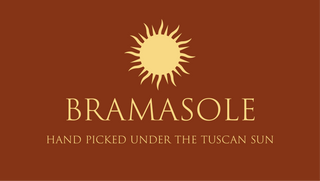Travel Time!

Travel Time!
Dear Friends of Bramasole Olive Oil, who are or are not at this moment traveling somewhere fascinating:
I think often of the opening lines of the sonnet, “On First Looking into Chapman’s Homer” by one of the greatest English poets, John Keats:
Much have I travell’d in the realms of gold,
And many goodly states and kingdoms seen
He wrote this fourteen-line poem in October 1816 when he was 21. Although the “realms of gold” meant the gold-edged pages of beloved books, the lines resonate for travelers anywhere. He was dead from tuberculosis five years later in Rome, where he had traveled, hoping the warm sun would cure him. His grave at the Protestant Cemetery is a frequent stop for me, to read again the engraving on his unnamed tombstone:
“Here lies One
Whose Name was writ in Water”
Well, Johnnie Keats got that wrong! Over 200 years later, his poems are being read with more interest than during his short lifetime.
As a point of reference, William Shakespeare didn’t write his first play until his mid-twenties and his 154 sonnets he started at age 29. If Keats had only come to Italy several years sooner to escape the dampness of London, who knows what poems he would have written. I take this as a prompt to go early and often!

But back to Travel Time—do you have bags packed or bags unpacked waiting to be repacked? Where to go? Somewhere. Anywhere. Frances and I were sitting in a café in Sardinia and she said, “What if we didn’t go home?” From that she wrote A Year in the World: Journeys of a Passionate Traveler. A few years ago, a similar question was raised, “Why don’t we visit all the regions of Italy?” Well, we did, and from that another book— Always Italy (no subtitle necessary).
I hereby give permission to everyone to do what we did, whether you do North (Piemonte) to South (Sicily) or East (Le Marche) to West (Liguria) or even alphabetical (Abruzzo to Veneto). And, of course, take the opportunity, as we did, to sample the olive oil from each region.
If enticement is needed, here’s the intro in Always Italy:
“The journeys I took for this book were exhilarating because, finally, I could stop at Greek ruins in Calabria; order the rustic pastas of Sardinia; stand under waterfalls in Trentino–Alto Adige; watch water buffalo milk turn into mozzarella in Puglia; and hike the sublime trails of Valle d’Aosta. I scoured the sights in all 20 regions. At last, I thought. I am beginning to know this country. Still, much remains for as many future trips as I can plan.

What a grand quest! My sense of adventure multiplied. Lost-in-time borghi of the Abruzzo and Molise; peak dining experiences in Emilia-Romagna; the joyous Sicilian Baroque churches that seem to have whipped cream as a building material; Le Marche’s turquoise waters and beaches, which looked to my Southern eyes like white grits. Finding the far reaches of Lombardy’s lake country: bliss. Those eagle-nest mountain retreats around Bolzano and Merano for curative mineral waters and robust mountain food. I especially liked the little castle strongholds in Piedmont, with undulating vineyards neat as rows of knitting.

How glorious, too, discovering each region’s food traditions: vastly different, passionately maintained. I’m sure you can find a bad meal in Italy—but if you follow your good instincts, where might that be? Even freeway Autogrills serve tempting panini and often feature cafeterias with pasta, grilled meats, and fresh vegetables. At the gas station! How is this possible? The simple answer: Italians won’t put up with bad food. My idea of heaven is to walk into a town around noon on Sunday and locate, usually by aromas drifting from the doorway, where the locals will be having their pranzo on this buona domenica.

I followed several food—especially cheese—and wine quests, wanting to try everything. It was fun tracking how the all-important daily bread varies. From the unsalted, hard-crusted loaves of Tuscany to Puglia’s cakelike rounds weighing in at six pounds (three kg) to Liguria’s tender focaccias and Sardinia’s savory flatbreads, all taste of the place itself.
A quick hit of context. Italy is roughly the size of Arizona. Imagine that southwestern state studded with Rome, Venice, Milan, Florence, Turin, Siena, Palermo, and a few dozen other fascinating cities. Imagine 5,600 museums and archaeological sites. And that’s not all. Italy possesses more UNESCO World Heritage sites than any other country in the world.
Amid so much beauty and humanism, you feel confirmed. The glittering, otherworldly Orvieto cathedral. Majestic Marcus Aurelius on horseback in Roma’s Piazza del Campidoglio. The frescoed palazzi of Trento look like medieval board games. Not a thing apart, art exists as naturally as air. 
On your way to buy bread in Venice, pass Palladio’s white-white church, Il Rendentore. Breathe in. Your sense of the possible expands. In Puglia, when I look up from my cappuccino at Troia’s 12th century duomo’s stone rose window—delicate as a paper doily—I realize that, like me locals have glanced at this marvel daily for many centuries. On my way through the park each morning in Cortona, I greet the dolphins and nymphs cavorting in the fountain. How this lifts you.
Travel is always a leap of faith into new worlds: twenty of them in Italy. Isn’t that exciting? Each region remains unique. What’s not yet known lies shimmering before you.”
Now go!!


